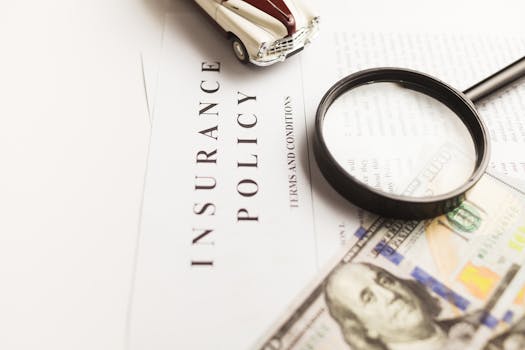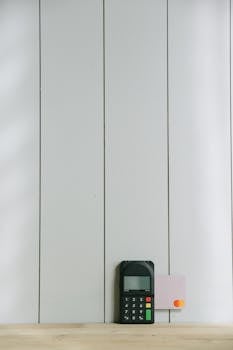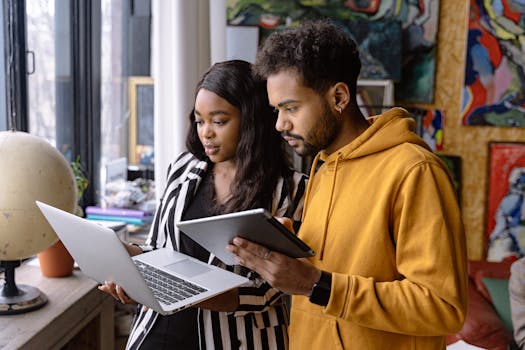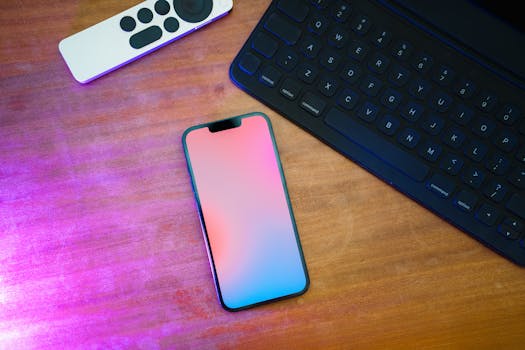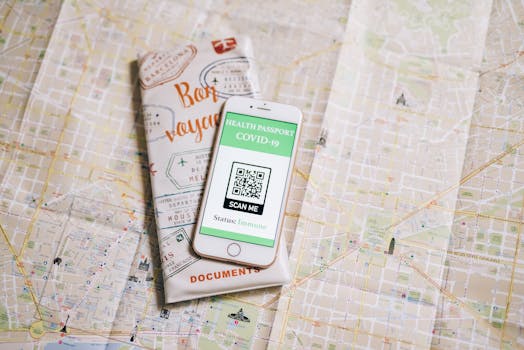Apps and Tech
Public Wi-Fi and VPN in the U.S.: use them safely in cafés, libraries, and airports
Understand how to protect your data on public Wi-Fi in US cafés, libraries, and airports. Real-world VPN strategies, safety tips, and device settings you can use immediately.
Advertisement
Coffee breaks at bustling cafés or hours spent at airports feel more convenient when Wi-Fi is free. Many in the U.S. rely on these networks to get work done. But using public Wi-Fi—especially without safeguards like vpn public wifi usa tools—may open the door to digital trouble.
Public Wi-Fi hotspots bring great flexibility, but also raise security concerns. Attackers may lurk on open connections, seeking to intercept your data or drop malware. Taking a few smart steps can dramatically reduce your risk while online.
This article shares practical guidance for anyone logging onto Wi-Fi in public spaces. Discover how to use vpn public wifi usa best practices in cafés, libraries, and airports with confidence.
Identifying Safe and Risky Public Wi-Fi Networks at a Glance
Spotting the differences between safe and risky public Wi-Fi networks ensures your browsing remains secure. Use the table and tips below when you connect outside home.
Don’t assume every café or library network is trustworthy. Attackers sometimes set up fake hotspots with nearly identical names. Use caution before connecting, especially when you see more than one similar option.
Official Networks vs. Suspicious Lookalikes
Staff will gladly confirm the real network name if you’re unsure which hotspot to use. This small step blocks one common attack technique.
Fake networks, such as “Free_Cafe_Wifi” when the posted sign says “CafeNet-Guest,” try to lure in the unwary. Verify details every time, even if you visit that spot regularly.
Malicious imitators can capture your login info. Take a moment to double-check with employees or search for official information. When in doubt, skip the connection.
Open vs. Password-Protected Hotspots
Password-protected hotspots usually reduce risk since the owner controls access. Anyone can join an open Wi-Fi, including people who want to spy on traffic.
Even public library or airport networks may require a login page, but that doesn’t mean they’re immune to abuse. Use vpn public wifi usa solutions no matter the signup type.
If the connection immediately lets you online—no password, no click-through—it may be less secure than networks requiring a passcode or web portal check-in.
| Hotspot Feature | Safe Example | Risky Example | Takeaway |
|---|---|---|---|
| Name Confirmation | CaféCashiers give written network name | Open unknown “Free WiFi” nearby | Ask staff or check signage before joining |
| Password Protection | Requires WPA2 password from receipt | No password required or generic login | Prefer networks with access codes |
| HTTPS Sites | Search bar shows padlock icon | No padlock for login pages | Stick to HTTPS for logins and payments |
| Session Duration | Connects for 2 hours, then times out | Unlimited open access | Shorter sessions offer more protection |
| Visible Users | Mostly patrons using laptops/phones | People loitering with unfamiliar gear | Avoid suspicious areas and odd users |
Securing Connections: Steps Before You Join a Public Network
Securing your traffic is doable with a checklist you can use anywhere. These steps greatly reduce your exposure even before activating your vpn public wifi usa app.
Smart preparation ensures little risk lingers even if an attacker monitors the network. Think of these as setting your locks and alarms before going online.
Device Settings to Enable
Switch off “auto-connect” to unknown Wi-Fi. This stops your phone from joining networks without you noticing. Find this under your device’s Wi-Fi preferences.
Turn off file sharing and AirDrop features. These can let strangers access your files across the same network. Enable them only for trusted home networks, never on public hotspots.
- Disable auto-connect to Wi-Fi to avoid automatic, unsafe hotspot logins.
- Keep your firewall active for basic protection against unauthorized access.
- Install updates regularly for the latest security patches and fixes.
- Close unused apps to prevent background data leaks on public networks.
- Log out of accounts after use to minimize risks from compromised sessions.
Making these changes helps you stay protected before you even see a login page. Pair these with your vpn public wifi usa connection for robust security.
Using Privacy Features in Apps
Check your browser and email apps for privacy options. For instance, Safari lets you enable “Hide IP Address” to reduce tracking while you browse.
Choose encrypted messaging over SMS if you must send personal information. Look for a lock or shield icon in app settings to find privacy features.
- Turn on “Always use HTTPS” in browser settings for safer web sessions.
- Sign in with two-factor authentication for logins, so stolen passwords aren’t enough.
- Avoid apps asking for more permissions than needed to reduce data exposure.
- Clear public Wi-Fi history after use to avoid repeat connection risks.
- Even on a vpn public wifi usa, never share private credentials on unfamiliar apps.
Each step strengthens your defenses and lets you enjoy café or airport Wi-Fi without nerves.
VPN Essentials: When, Why, and How to Connect in Public Spaces
Switching on your vpn public wifi usa service is a vital move when logging in at public venues. It ensures all your web traffic gets encrypted instantly.
Whether working from a library or streaming at an airport, using a VPN means you won’t expose personal information on shared networks.
Starting Your VPN Before Anything Else
Open your vpn public wifi usa app as soon as your Wi-Fi connects, even before launching your browser or email. Encryption only works when used from the start.
If you wait until after opening sensitive sites, someone may already have seen unprotected data. Get in the habit: Wi-Fi, then VPN, then everything else.
Make your VPN auto-connect on public networks. Most apps include this handy feature—check your preferences today for smoother, reliable protection.
Choosing the Best Server Location
Pick a U.S.-based server when accessing domestic services. Using a vpn public wifi usa location avoids verification errors and helps services load quickly.
If you need access to international content, you can adjust the region within your VPN app. Return to a U.S. server before accessing banking or government sites.
Quickly change servers for better speeds if a connection seems slow, but always keep the vpn public wifi usa connection active until you’re done using Wi-Fi.
Daily Scenarios: Café, Library, and Airport Wi-Fi Use in Practice
Knowing exactly how to act in each setting takes you from theory to practice. Public locations each present unique risks to manage using vpn public wifi usa.
Test these behaviors the next time you step into a coffee shop, library, or airport lounge. This hands-on approach helps you make security second nature.
Cafés: Savor the Latte Without Leaking Data
At Starbucks or an indie café, always ask staff for the network name. Begin your vpn public wifi usa session before browsing or shopping online.
If you must enter payment info (food orders, etc.), check for the “https” padlock in your browser bar. Be wary of nosy onlookers—sit with your screen away from others.
Don’t leave devices unattended, even briefly. If a stranger’s behavior feels odd—hovering near your table, glancing at your laptop—take your device with you if you move.
Libraries: Blend Safe Browsing With Learning
Libraries typically post official Wi-Fi details at help desks and on monitors. Confirm the info and activate your vpn public wifi usa protection before starting research projects.
Limit logins to library catalogs, cloud docs, or academic emails—avoid shopping and online banking. Libraries are open for all, so never leave possessions or accounts open.
Check that you sign out fully when you finish, especially on shared or public computers. Responsible habits here reduce risks for everyone, not just yourself.
Minimizing Risks: What to Avoid and What to Prioritize
Proactive choices keep you safer, even after activating your vpn public wifi usa. Here’s what not to do and what to always keep front of mind on public Wi-Fi.
Adopt these habits consistently—internet safety works best as a routine, not a one-off step.
- Avoid sensitive financial transactions: Save banking, crypto, and medical logins for home connections, even if you’re using a vpn public wifi usa.
- Don’t install software: Update apps only on trusted networks since public Wi-Fi is a favorite delivery path for malware or fake updates.
- Never allow file sharing from unknown sources: Disable sharing features and don’t accept transfers unless you initiated them from a known device.
- Avoid ignoring browser warnings: If you see red warnings about security certificates, back out instead of “proceed anyway.” Respect built-in browser alerts.
- Avoid staying idle: Log off public Wi-Fi once you’re done. Staying connected exposes you to new risks even if you aren’t actively using the device.
Each item keeps exposure lower—being deliberate pays off over risky convenience.
- Prioritize HTTPS connections: Look for browser padlocks or use extensions that force HTTPS, making it harder for anyone to see your sensitive info.
- Use unique, long passwords: Never recycle the same login. Strong vault-like combinations block brute-force attacks if someone hijacks the session.
- Log out of all sessions: Sign out from email, shopping, and social accounts to prevent access if a session is hijacked.
- Enable OS-level security: Use biometric unlock, lock screens, and remote wipe in case your device is lost or stolen outside home.
- Keep VPN on for all traffic: Never drop vpn public wifi usa coverage for “just one quick thing.” Consistency matters against attackers who watch for lapses.
Setting these behaviors as habits pays off in smoother, worry-free browsing each time you step outside your home Wi-Fi.
Maintaining Privacy Beyond VPN: Browser and App Settings that Protect You
Web browser and app settings add another layer on top of your vpn public wifi usa, shrinking your digital “footprint” everywhere you go online.
You can control who sees what about you—even on public networks—by tweaking built-in privacy tools.
Browser Profiles and Private Windows
Browse in “Incognito” or “Private” mode for local privacy. This clears cookies, cache, and history when you close the session—helpful on borrowed or public computers.
Create a profile just for travel or public browsing. Separate it from your main personal profile, and use it only when out at cafés or airports.
Don’t save passwords in your browser when traveling. Use a password manager instead—secure logins, but nothing stored on public computers.
Custom App Permissions and Data Minimization
Turn off location sharing, contacts access, and Bluetooth for apps when traveling. Only enable permissions for apps that truly need them, and only temporarily.
Review app privacy reports on iOS or Android—it reveals which apps ask for what data and how they use it. Change settings right away if you spot surprises.
Switch off “background refresh” for nonessential apps. This stops silent data flows when your device connects to unfamiliar Wi-Fi or data networks.
Taking Wi-Fi Security Seriously in Every Setting
Making secure choices each time you connect sets you up for safer internet use daily. Cafés, libraries, and airports in the U.S. pose unique risks.
Protecting your data isn’t just about turning on your vpn public wifi usa once and forgetting it. Layered defenses—with device, browser, and habits—deliver real results.
Digital safety is part action, part awareness. Use these practices in every public setting, adapting as needed for each circumstance, and you’ll stay a step ahead every time.

